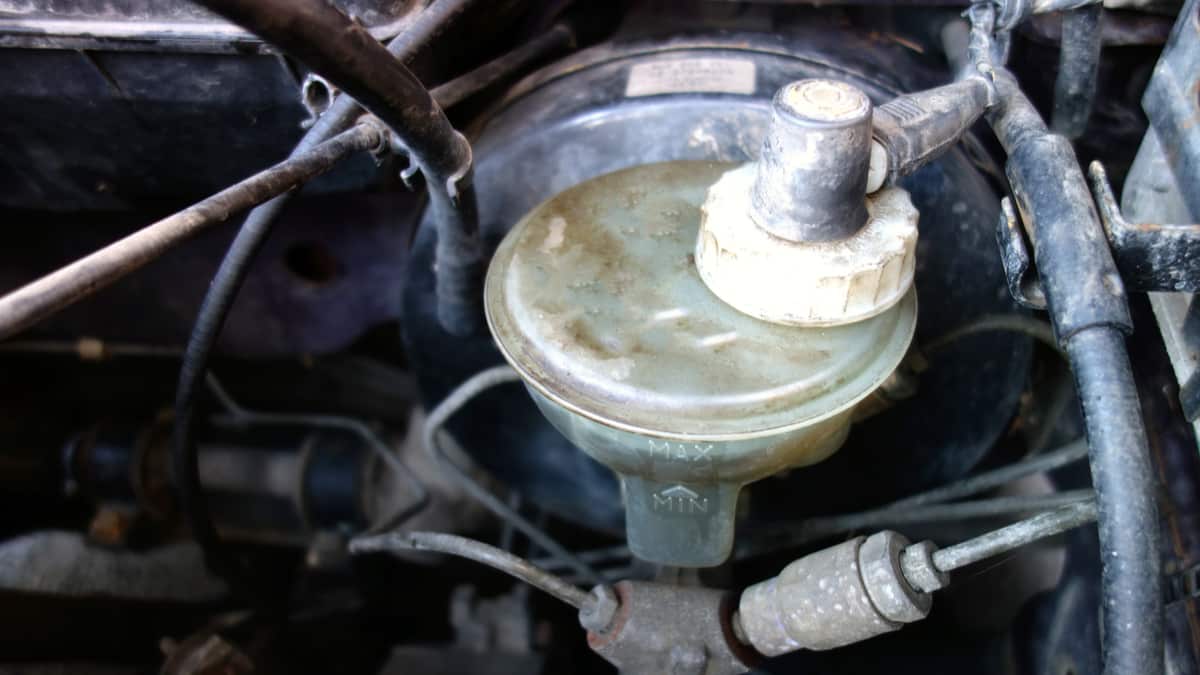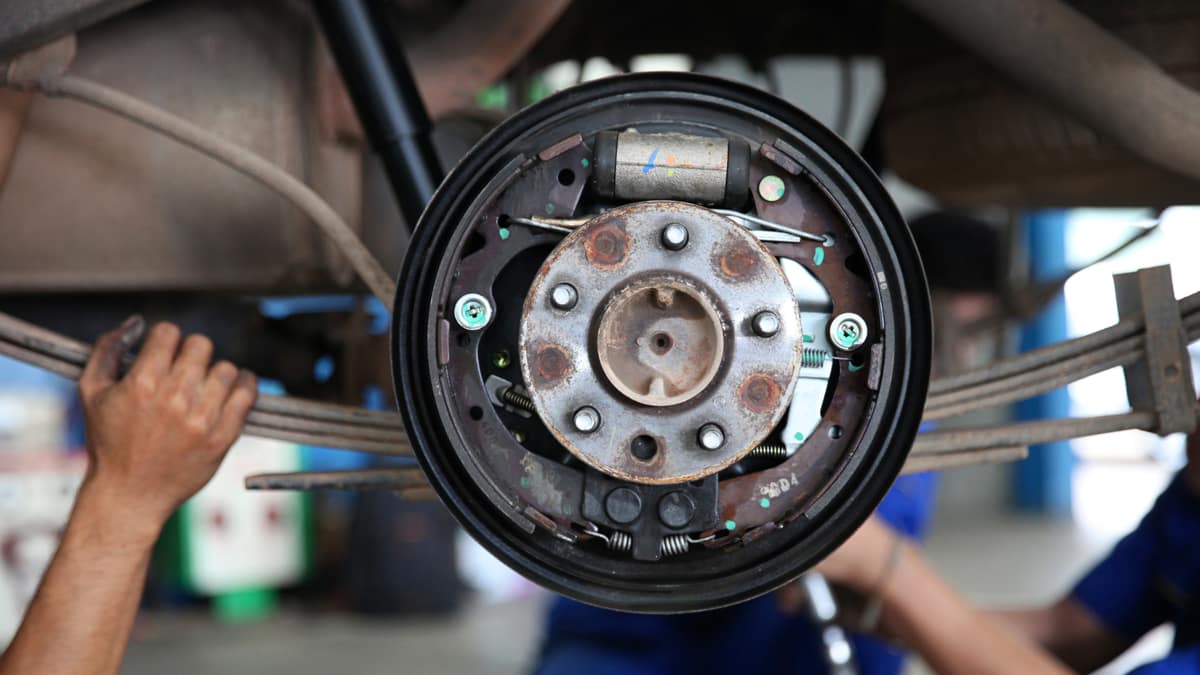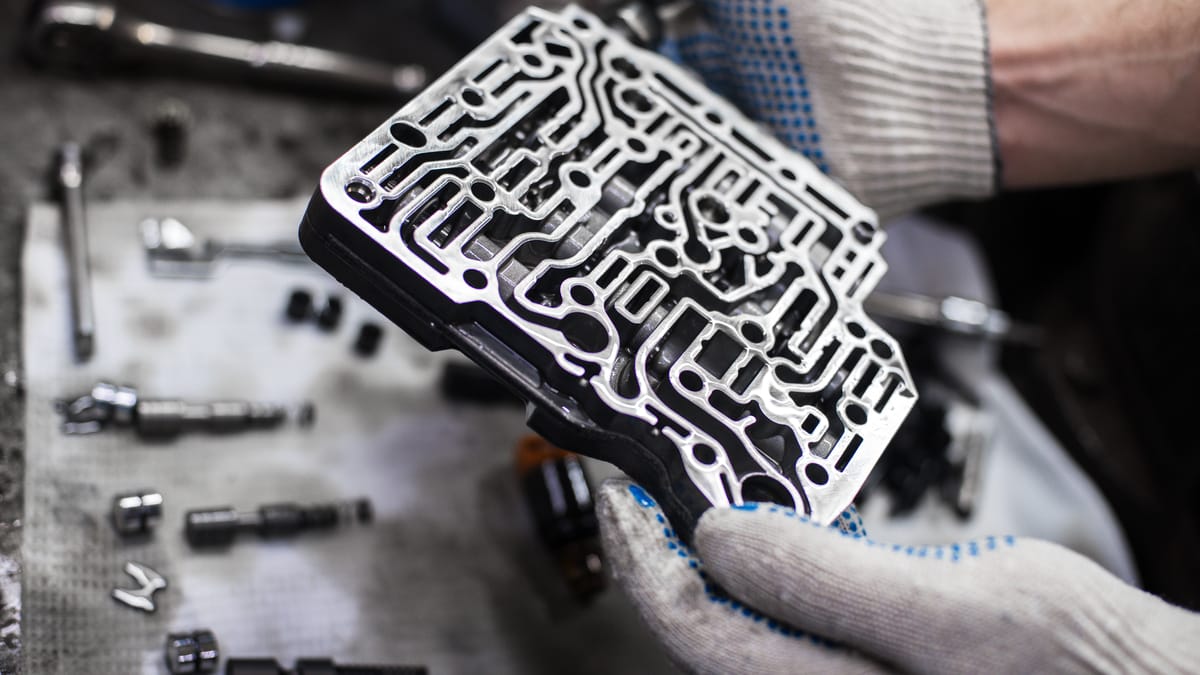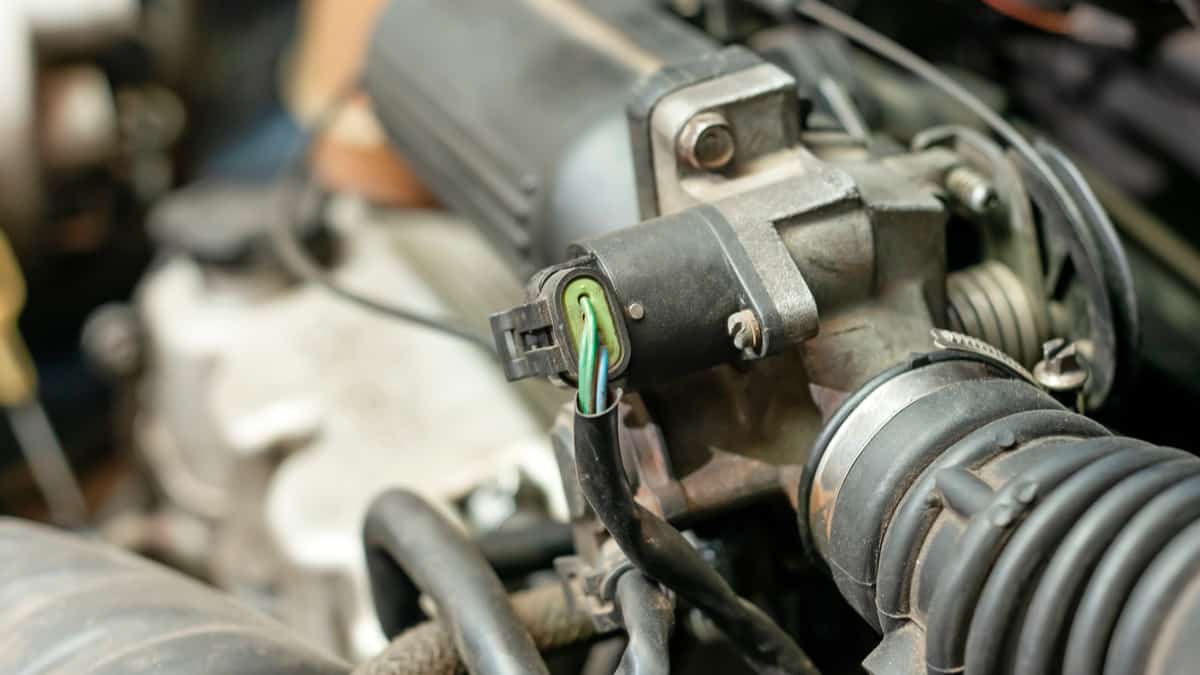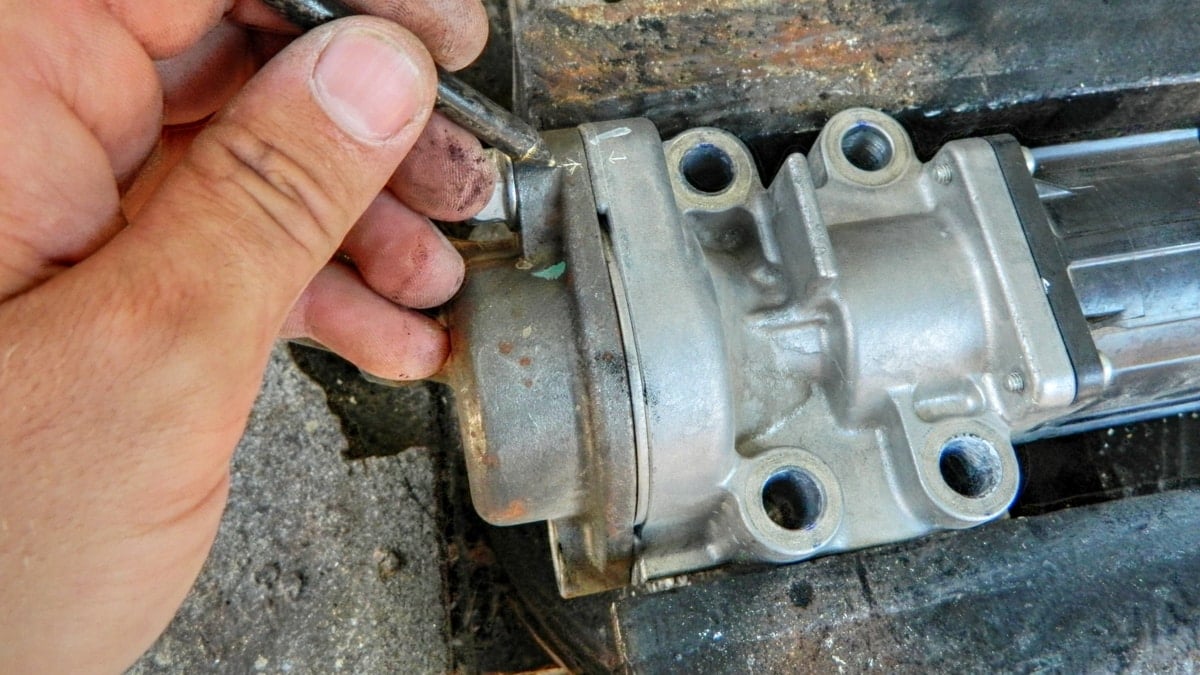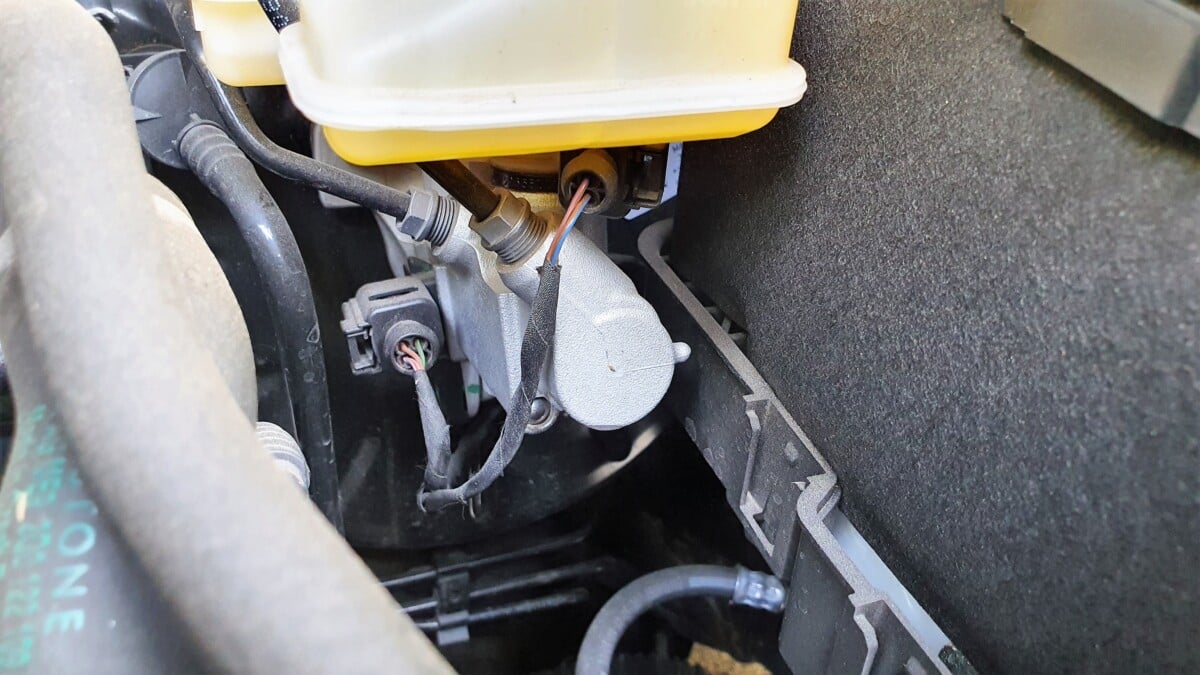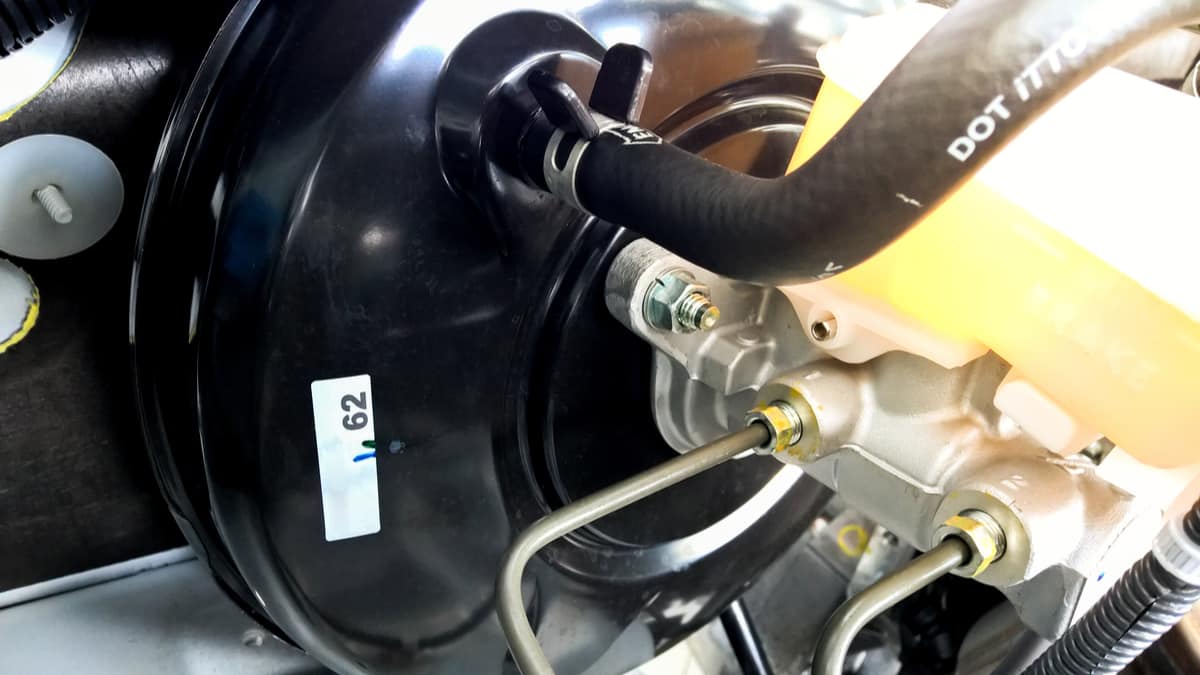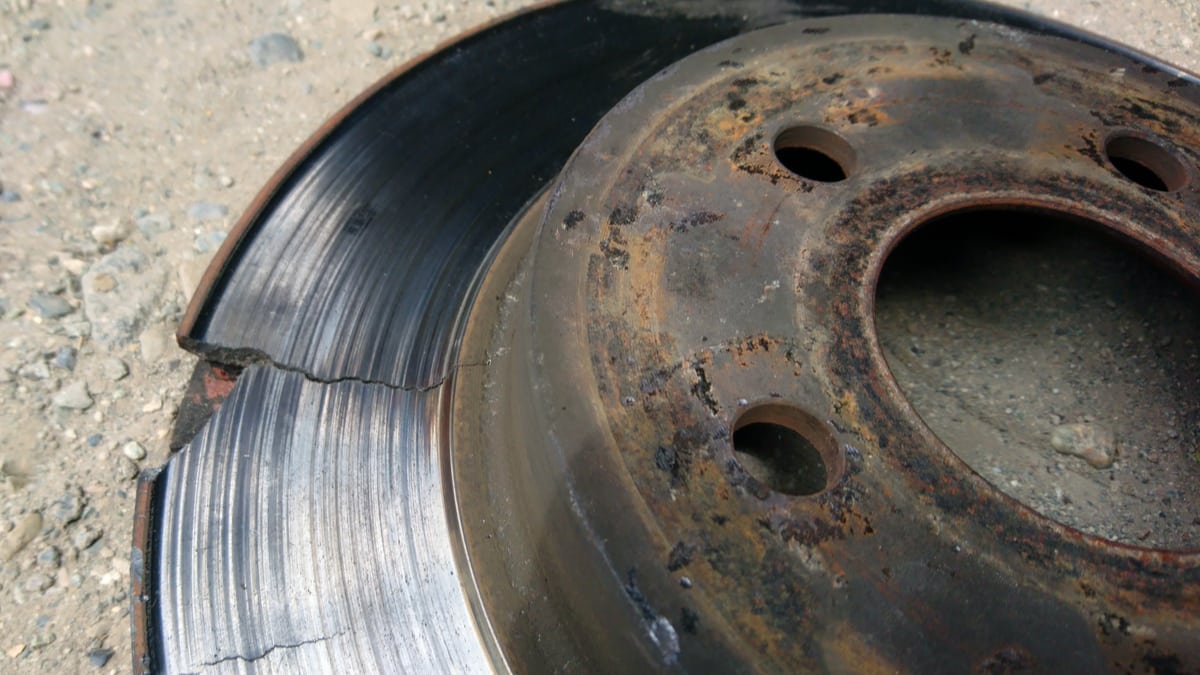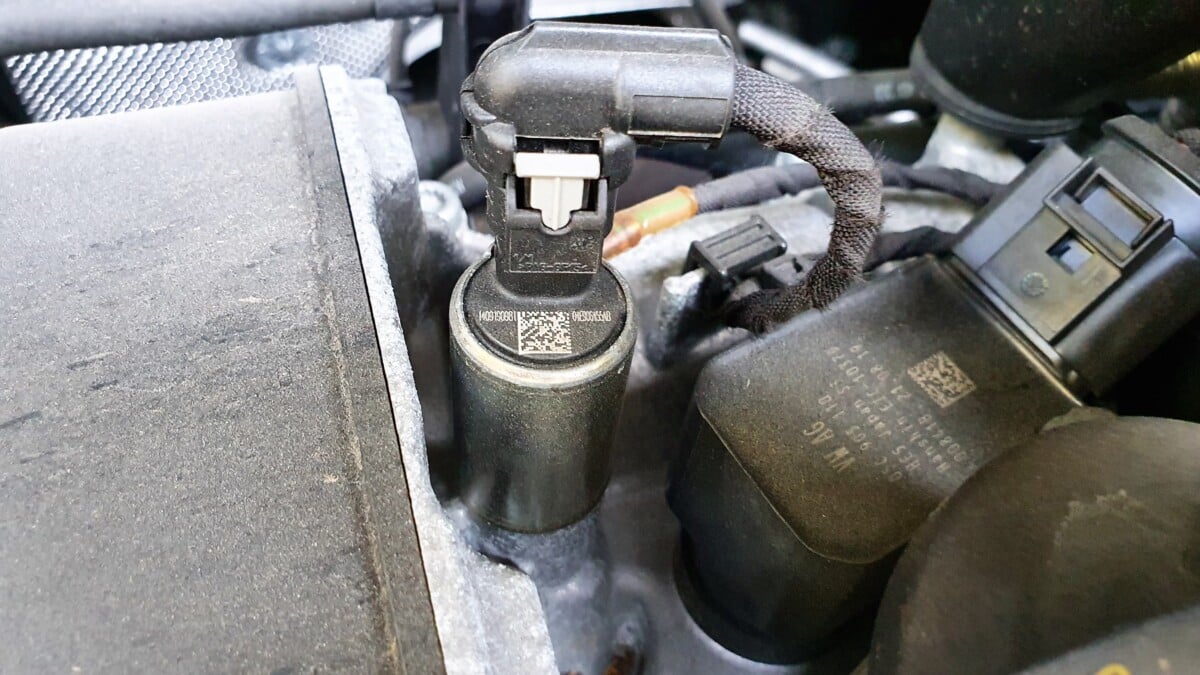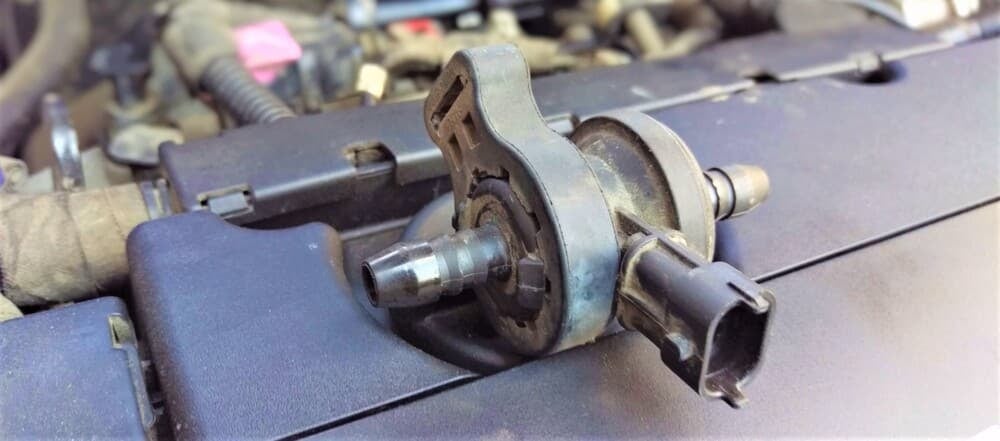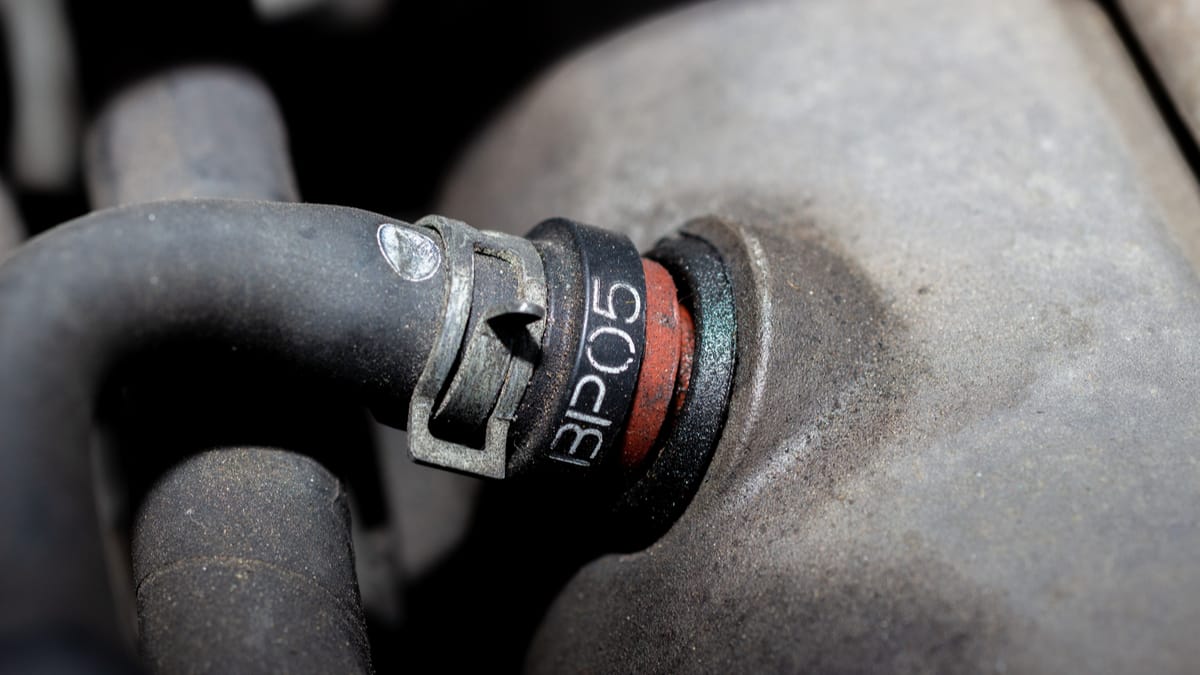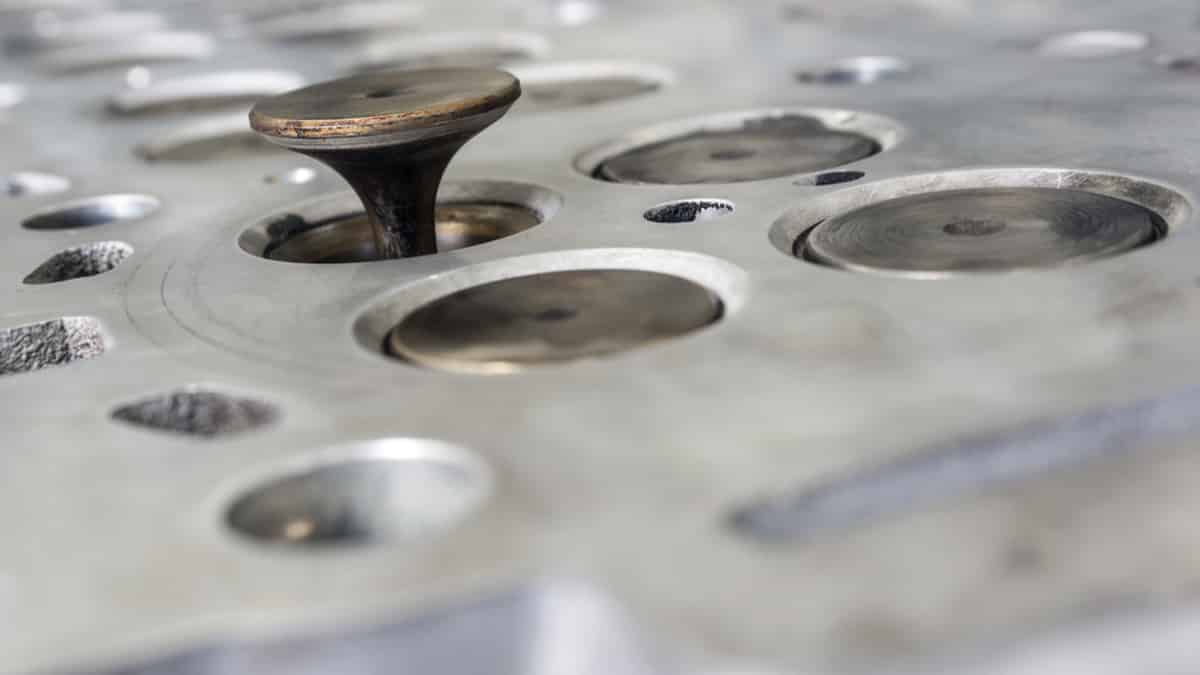The car’s braking system is an essential part of any vehicle. It’s designed to bring the vehicle to a stop by slowing down the rotation of the wheels. Yet, with so many parts, it can be difficult to determine what goes wrong when braking performance suffers. As an example, what are the symptoms of a bad brake booster check valve and how do you know if this part is malfunctioning?
In this guide, we look at the most common bad brake booster check valve symptoms and explain its function. We point out the location, show you how to test it and breakdown the replacement cost of the brake booster check valve. At the end of this article, we answer some of your top questions.
Symptoms Of A Bad Brake Booster Check Valve
When the brake booster check valve fails, you may notice a stiffer brake pedal. It also causes trouble braking or stopping the vehicle. In some cases, the Check Engine Light may come on or you could notice engine performance problems because of the vacuum leak.
Let’s examine these four symptoms in detail.
1. Stiff Brake Pedal

The check valve can break or crack. When this happens, it can no longer remain sealed, so a vacuum leak is created.
This problem causes the brake pedal to feel stiff, making it more difficult to press down. The reduced vacuum also means less boosting power when you push the pedal, meaning you need to push down with more force to get the brakes working.
There are other problems that lead to a stiff brake pedal, so you can’t assume that the brake booster check valve is to blame. It could also be due to a cracked vacuum hose, a seized caliper, a bad brake booster or contamination of the brake lines.
2. Trouble Braking

If the check valve is blocked, air can’t be sucked in from the vacuum brake booster. If it breaks, air seeps into the brake booster. Either way, braking performance is hindered.
As with the stiff pedal, there are many causes of these issues beyond the brake booster check valve. You could also be dealing with air in the brake line, low fluid levels, a damaged caliper, a defective master cylinder or issues with the ABS modulator. Either way, it’s important to perform a complete diagnosis before replacing any parts.
3. Check Engine Light
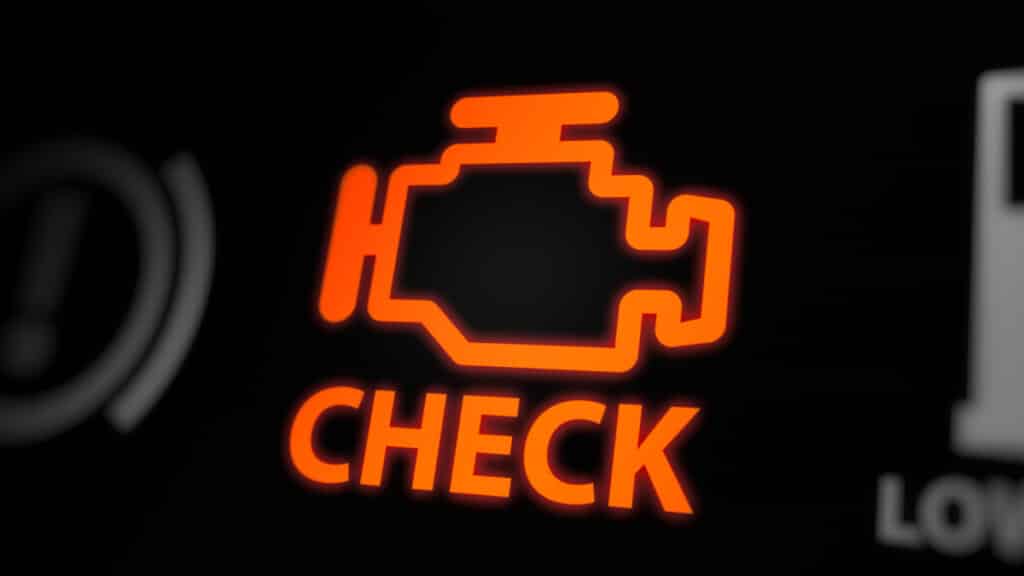
The brake booster check valve routes vacuum pressure from the engine. The brake booster system is under vacuum at all times. This air gets measured by the Mass Air Flow (MAF) sensor. Therefore, if the check valve starts leaking, the measured air will be lost. The vehicle starts running lean.
This condition causes the Check Engine Light to come on. With your code scanner, you may find DTCs related to air-fuel ratios. This symptom would come at the same time as braking trouble. If it doesn’t, there could be something unrelated wrong with the engine.
4. Engine Performance Issues
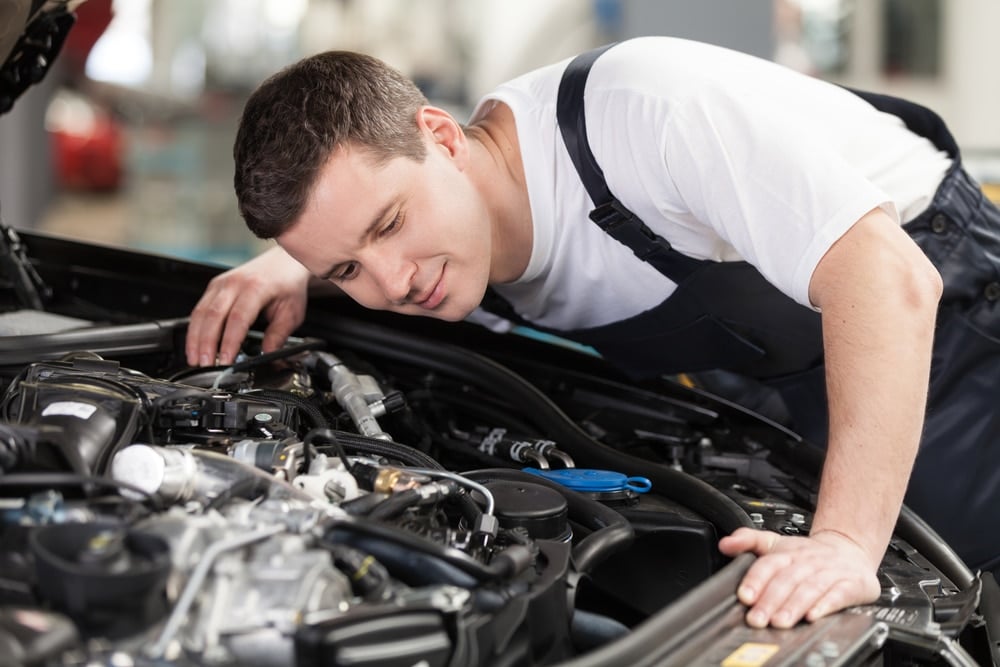
As the engine runs lean, unregulated air in the induction system creates performance problems. The engine RPM may drop and the engine can stall if the condition is bad enough.
However, a broken check valve isn’t the only problem this system can create. It could also be caused by a leaking brake booster diaphragm, along with many other non-brake related problems, which is why a professional diagnosis is so important.
What’s The Function Of A Brake Booster Check Valve?
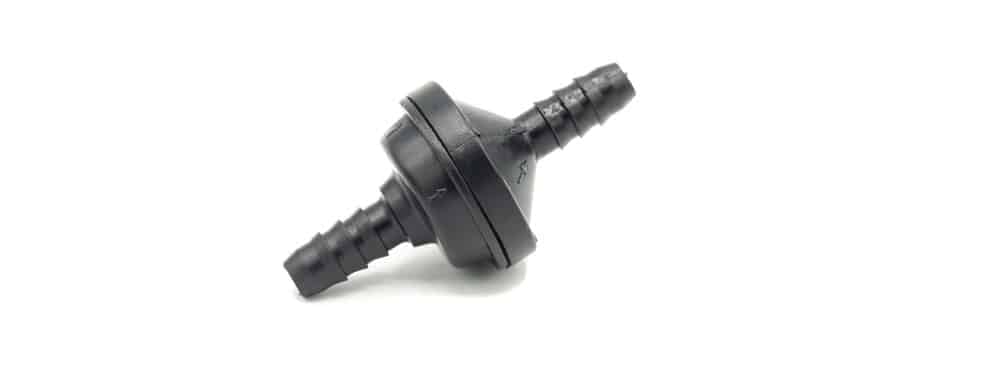
Air gets trapped in the vacuum brake booster. The check valve expels the air with its one-way design. The brake booster contains two chambers that are separated by a diaphragm. Vacuum is provided to these two chambers through the intake manifold or vacuum pump, depending on the design.
As you push on the brake pedal, air goes into one chamber to create pressure that helps push into the diaphragm. This added pressure amplifies your force on the brake pedal, making it easier to stop the vehicle.
When you release the pedal, the vacuum pressure returns to normal in both of the chambers. Here are a few of the most important functions of the booster check valve.
- Maintains vacuum in the booster
- Keeps external air from entering the vacuum brake booster
- It releases pressure buildup
Most modern cars are equipped with a brake booster and check valve. These components make up the vacuum-assisted brake system.
Where Is The Brake Booster Check Valve Located?
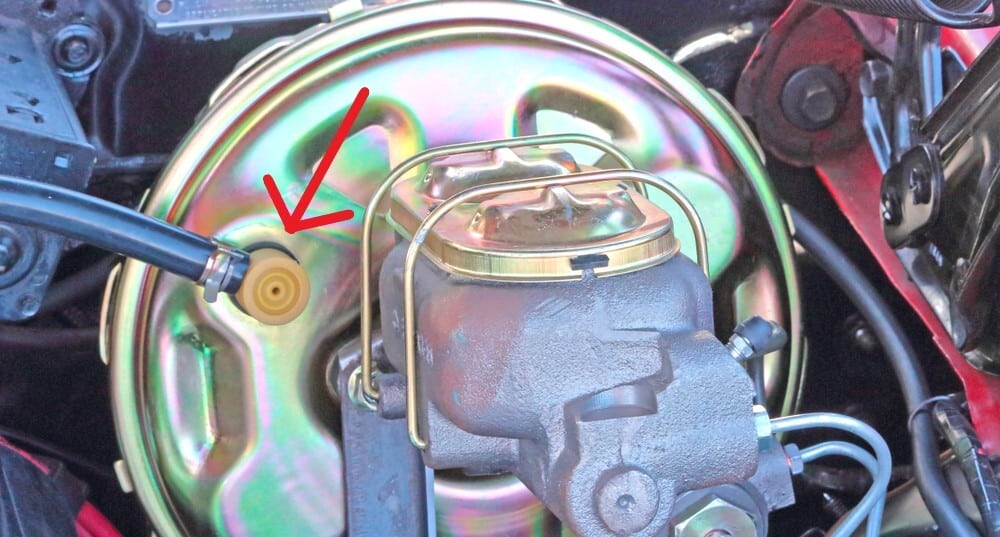
With most vacuum-assisted braking systems, the booster check valve is located on the brake booster. If it’s not there, it will be in line with the vacuum hose.
The booster is shaped like a dome. It’s mounted towards the rear engine compartment wall. Typically, you’ll find it on the driver’s side, in line with your brake pedal. To find it easily, trace the vacuum hose starting at the intake manifold to the engine, leading to the vacuum booster.
How Do You Test The Brake Booster Check Valve?
Because the check valve holds vacuum even with the motor off, you can check it without turning on the car. This valuable safety feature ensures you have power brakes, even if the engine stalls, so you can get pulled over safely.
With vacuum stored in the booster, we can check the valve with these steps.
- Park your car on level ground.
- Open the car hood to get into the compartment.
- Find the brake booster, located on the driver’s side of the vehicle, near the firewall. It’s in line with your brake pedal.
- Disconnect the check valve and hose from the brake booster.
- If a whooshing sound occurs after disconnecting the check valve and hose, the check valve is probably working.
- If there’s no sound when these parts are removed, the check valve isn’t holding vacuum and needs to be replaced.
- Replace the booster check valve and retest.
If the check valve is within the vacuum hose, you won’t be able to service it according to these steps. In these cases, you must replace the check valve and the hose as a whole unit.
To replace the check valve, follow these steps.
- Remove the gear-type clamp by loosening the screw head in a counterclockwise motion or with your pliers, squeeze the tabs together to compress the spring-type clamp.
- Take off the brake booster vacuum hose with the twist and pull motion. The twist breaks the seal, so you can pull the hose off easily.
- Take off the vacuum brake booster check valve. If it is stuck in place, spray some penetrating oil between the valve and the grommet. A pair of pliers helps you grip on better and makes it easier to twist and pull it.
- If the rubber grommet comes out during the process, make sure it gets reinstalled on the brake booster.
- Install the new brake booster check valve. Push in securely to the rubber grommet. Penetrating oil may help with this process.
- Reinstall the vacuum hose by pushing it back on the barbed end of the check valve.
- Reinstall the hose clamp. Snug the connection, but don’t overtighten it.
- Test drive the vehicle in a safe location. Try out the brakes to see if they feel normal. If there are further problems, you may prefer to have a professional mechanic look at the system.
If you need to replace an in-line check valve, you may have to replace the vacuum hose assembly. Double-check the necessary procedures for your vehicle in the service manual.
How Much Does It Cost To Replace A Brake Booster Check Valve?
On average, you may spend $75 to $150 to have the brake booster check valve replaced. If you can perform the job yourself, it may only cost you $25 to $55 for the parts. Even with only minimal expertise, you can have the new brake booster check valve installed within thirty minutes.
If you choose to hire a professional for the work, make sure they have ASE certifications and they have good customer reviews. You should also ask for a warranty on the service, giving you guarantees on the work that was performed.
Which direction does a brake booster check valve go?
The brake booster check valve only allows air in one direction, so it must be mounted correctly. Suck on the valve. If you are able to suck air, the end you are sucking from goes toward the engine. This direction prevents air from moving into the booster when a backfire occurs, ensuring the diaphragm doesn’t get damaged.
Why is my brake pedal hard after replacing a brake booster check valve?
If the brake booster check valve was just replaced, but the pedal remains hard, you may have a defective brake booster. Other symptoms of a bad brake booster include decreased stopping performance and other similar attributes of a bad check valve.
How do I know if my brake booster has a vacuum leak?
If there’s a vacuum leak, the brake pedal may become harder to push. It could also turn spongy or unresponsive to your pressure. Depending on the severity of the vacuum leak, the Check Engine Light may also come on and there could be performance issues.
Why is my brake booster check valve not releasing pressure?
If the check valve malfunctions, usually due to a clog or stuck valve, it can remain sealed and pressure won’t release. This problem creates reduced braking power. You have to press harder on the brake pedal to get the car to stop, so you want to have it checked by a mechanic immediately.
Is a brake booster check valve easy to replace?
With some vehicles, it’s as simple as twisting and pulling it out. However, the check valve can get stuck, so you may need to apply some penetrating oil between the check valve and the sealing grommet made from rubber. You can also use some pliers to enhance the grip on it before twisting it.
The brake booster check valve is a small part that can lead to big trouble. As professional mechanics, we’ve seen plenty of brake booster check valves go bad over our years in the shop, but it’s not something most drivers are used to dealing with. For that reason, you may feel better taking your vehicle to a professional for the replacement.
Considering you are working with the delicate brake system, this may be your best option. After all, you don’t want to make any mistakes with the brakes that could reduce performance on the road.
Categories: Brakes
